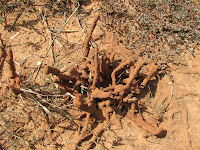Search This Blog
Questions about insects, spiders, scorpions or other creepy crawlers? Tune into this blog to learn about what's buggin' you!
Posts
Showing posts from 2009
Freak Ladybug Emergence this Weekend
- Get link
- Other Apps
Snout Nosed Butterflies and Armyworms - are they the same?
- Get link
- Other Apps
Bees vs. Hummingbirds ... Who Will Win?
- Get link
- Other Apps
Sudden Infestation of Little Winged Insects???
- Get link
- Other Apps





